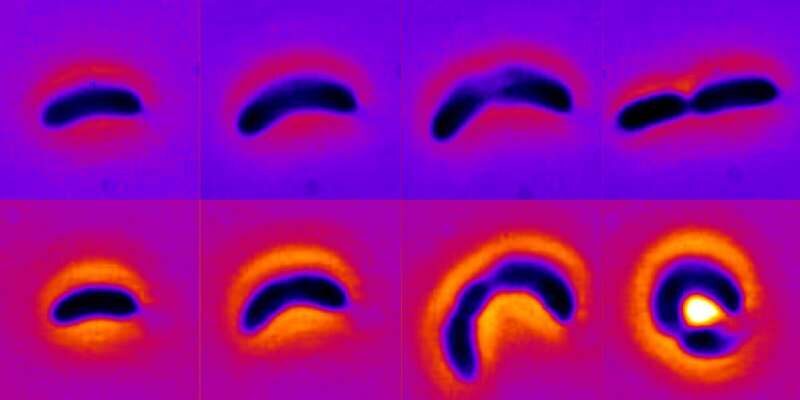© Carnegie Mellon University
Comparison of growth of Caulobacter crescentus when exposed to an antibiotic (bottom) and not (top).New research led by Carnegie Mellon University Assistant Professor of Physics Shiladitya Banerjee demonstrates how certain types of bacteria can adapt to long-term exposure to antibiotics by changing their shape. The work was published in the journal
Nature Physics.
Adaptation is a fundamental biological process driving organisms to change their traits and behavior to better fit their environment, whether it be the famed diversity of finches observed by pioneering biologist Charles Darwin or the many varieties of bacteria that humans coexist with. While antibiotics have long helped people prevent and cure bacterial infections, many species of bacteria have increasingly been able to adapt to resist antibiotic treatments.
Related Keywords
Nikola Ojkic , Charles Darwin , Roisin Stephens , Shiladitya Banerjee , Norbertf Scherer , Carnegie Mellon , University College London , University Of Chicago , Carnegie Mellon University Comparison , Carnegie Mellon University , Carnegie Mellon University Assistant Professor , Physics Shiladitya Banerjee , Nature Physics , சார்லஸ் டார்வின் , கார்னகி மெலந் , பல்கலைக்கழகம் கல்லூரி லண்டன் , பல்கலைக்கழகம் ஆஃப் சிகாகோ , கார்னகி மெலந் பல்கலைக்கழகம் ஒப்பீடு , கார்னகி மெலந் பல்கலைக்கழகம் , கார்னகி மெலந் பல்கலைக்கழகம் உதவியாளர் ப்ரொஃபெஸர் , இயற்கை இயற்பியல் ,
comparemela.com © 2020. All Rights Reserved.
